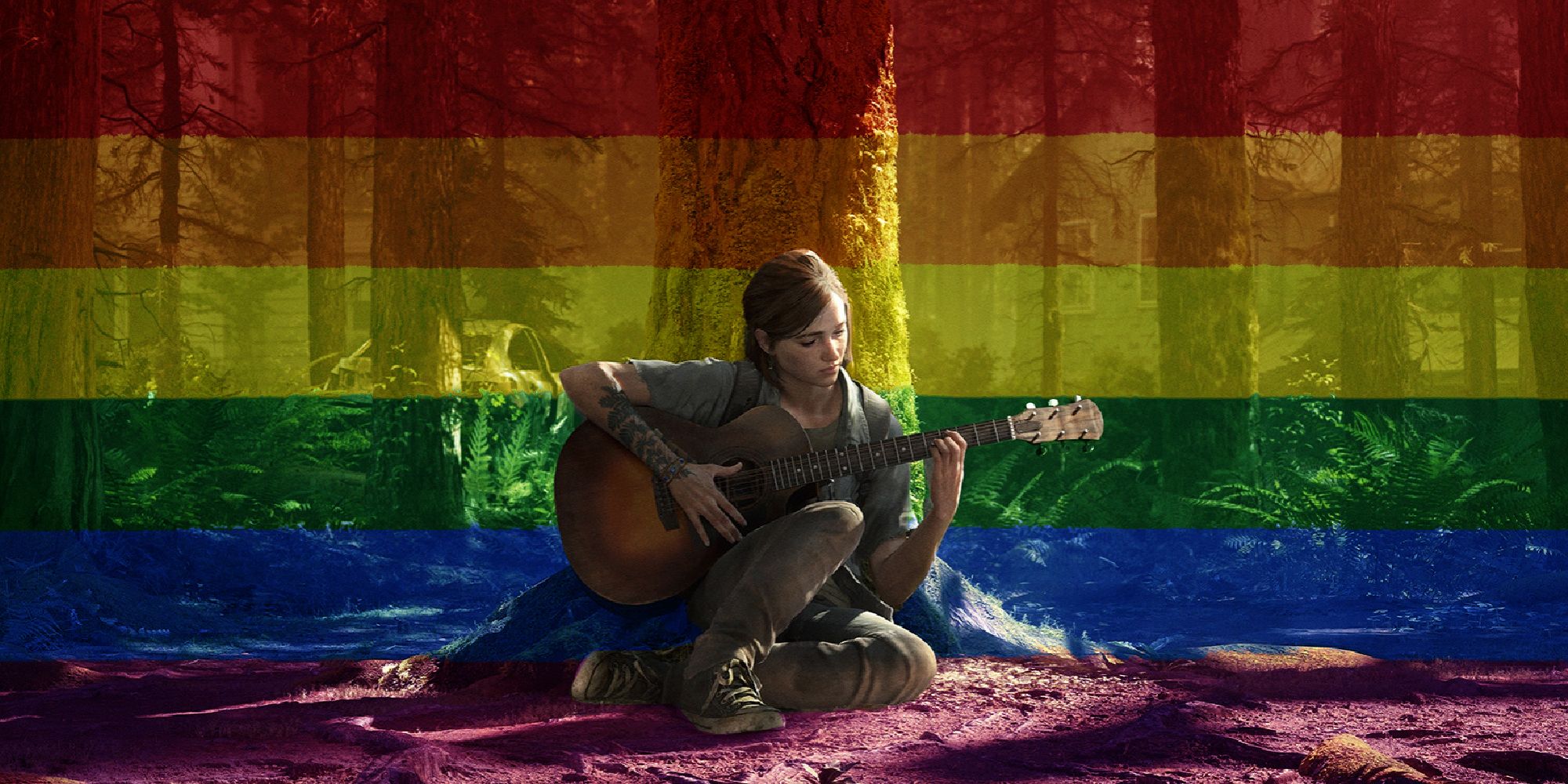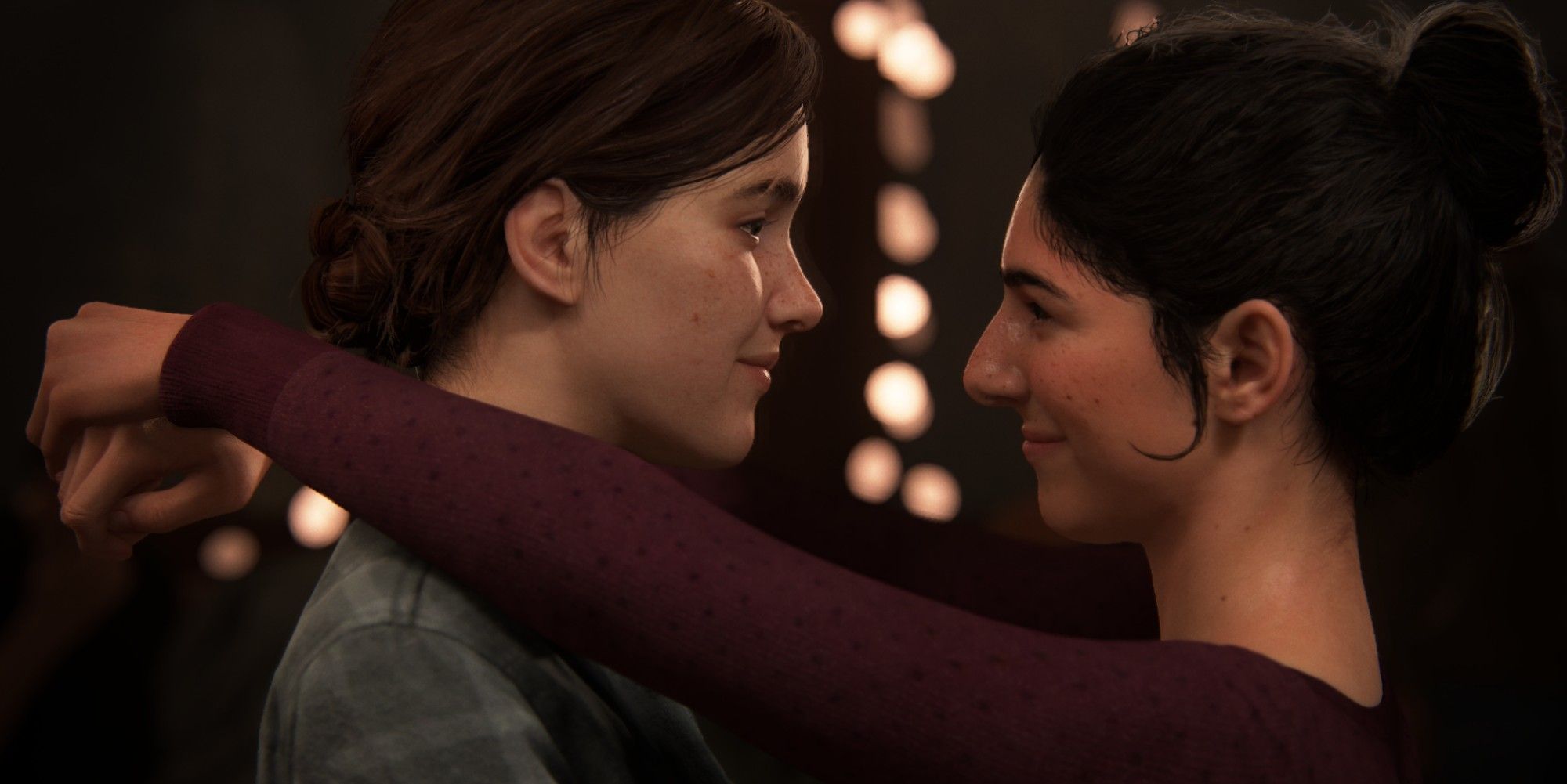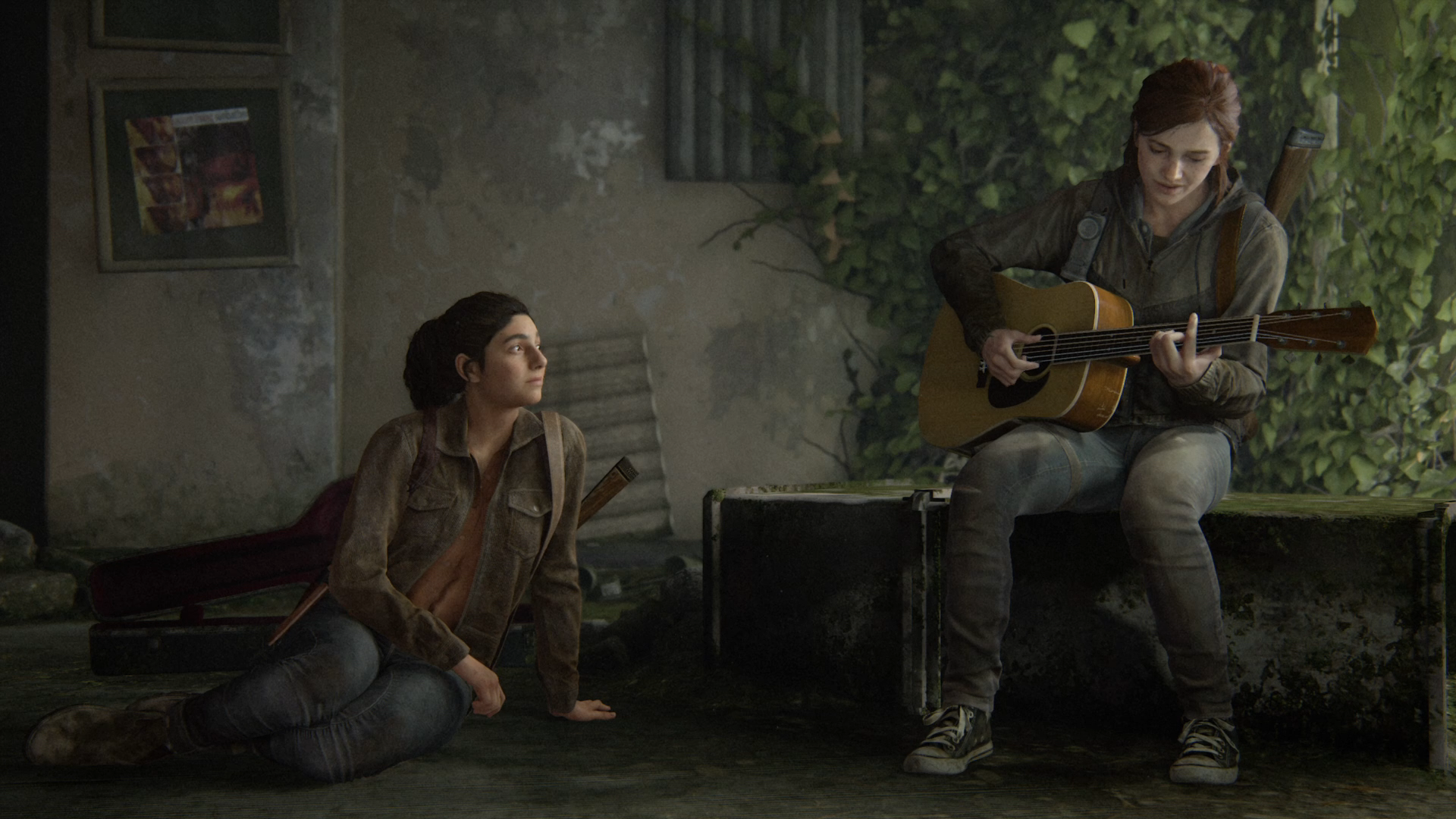This article is part of Pride Month Picks, a collection of pieces that aim to highlight queer representation across games, television, film, books, and more throughout June.
The Last of Us Part 2 was popular to hate when it first came out. Gamers were mad because Joel wandered off for an adventurous game of golf while female characters like Ellie and Abby were thrust into the limelight. This post-apocalyptic world belonged to women, especially fruity lesbians and those with massive muscles and a love for hammers. Sorry, boys, you can’t sit with us.
It’s a masterpiece, building upon the narrative themes of the beloved first game while taking its mixture of combat and exploration to new and exciting places. Naughty Dog produced one of the finest blockbusters in recent memory, and were notably uncompromising when it came to LGBTQ+ themes that sought further representation in the mainstream space. Ellie is a proud lesbian, Dina is a vocal bisexual, and Lev is an excellent trans character whose identity is effectively woven into the narrative.
Left Behind, a standalone single-player expansion for The Last of Us, first introduced us to Ellie’s lesbian identity. Her childhood romance with Riley was a touching tragedy, and while groundbreaking for the time, sadly fell victim to the ‘bury your gays’ cliche that queer characters suffer in order to further character development. Moments after they shared a kiss, both of them were infected, an unnecessary loss in the grand scheme of things.
We’ve seen this trope used by often well-meaning heteronormative creators time and time again in the past, failing to depict queer experiences in a realistic and nuanced way without causing them to suffer as a consequence. Now you could argue that The Last of Us exists within a world that is relentless to everyone regardless of race, orientation, or gender, but Left Behind was an explicitly queer story that doomed Ellie to an inevitable loss of a partner right as she comes to terms with her own sexuality. It could have been so much more, but in 2013 the needle simply hadn’t moved far enough in the direction of progress for it to matter.
The Last of Us Part 2 not only changed that trajectory, but wanted to make up for past mistakes and allow Ellie and Dina’s relationship to be the emotional centrepiece. While they encounter bigotry in the form of older generations and outdated ideals across the narrative, the happiness both of them gain from a same-sex relationship is never in doubt. The two are in love, and the moments shared together are glimmers of hope in a world long doomed to ruin. If it wasn’t for Ellie’s irrational thirst for revenge they could have grown old together, far away from the spreading infection and warring factions bred for violence.
When the duo take shelter in a cannabis farm to weather out a storm this isolation inevitably paves the way for youthful intimacy. Clothes are torn away and we watch them embrace in a kiss as the screen fades to black. Queer sex isn’t depicted here to titilate, but to showcase how beautiful and natural such a relationship can be and the happiness it brings. It isn’t overly feminine or sexualised, but feels real because of the emotions on display and a willingness to let that shine above all else. Even in the apocalypse we crave companionship, and will form bonds to help us push through hardships that often feel insurmountable.
In the mainstream space I don’t think we’ve seen a lesbian romance depicted so honestly, showing how messy queer identity can be even when it isn’t linked to so much bloodshed. Ellie and Dina are clearly in love, but they still have problems, and their warring ideologies eventually see them split apart never to reunite. We mourn this loss, but we understand it, and it isn’t sugar coated in order to give us santised representation or overly tragic to bury any potential progress. It feels real, and that’s an element of queerness we need more of.
Ellie and Dina are one of the current high watermarks of the medium when it comes to queer representation, with Naughty Dog unafraid of positioning a queer female character at the centre of its biggest franchise. It made me feel seen and appreciated, even if I all but turned against Ellie as the credits rolled, and I was left to ruminate on her decisions. Lev is equally groundbreaking as a trans character. He is always supported, and being outed through his deadname and controversial past is done in service of a narrative that always seeks to reinforce his identity. He is granted happiness, and that’s ultimately what he deserves.
When The Last of Us Part 2 launched it reminded me of how tricky LGBTQ+ representation can be. Some wish for queer stories and characters that aren’t santised or corporate, while also decrying anything that puts us through undeserved hardships. There is seldom a satisfying middle ground, and that’s something I’ve always found frustrating because in the modern day being queer isn’t always easy. It’s euphoric, affirming, beautiful, and so many other things that I would never think to abandon, but it’s also hard, messy, and troubled.
Representation isn’t a linear path, and The Last of Us Part 2 expertly weaves queer experiences throughout its world without ever subjecting them to special treatment.




